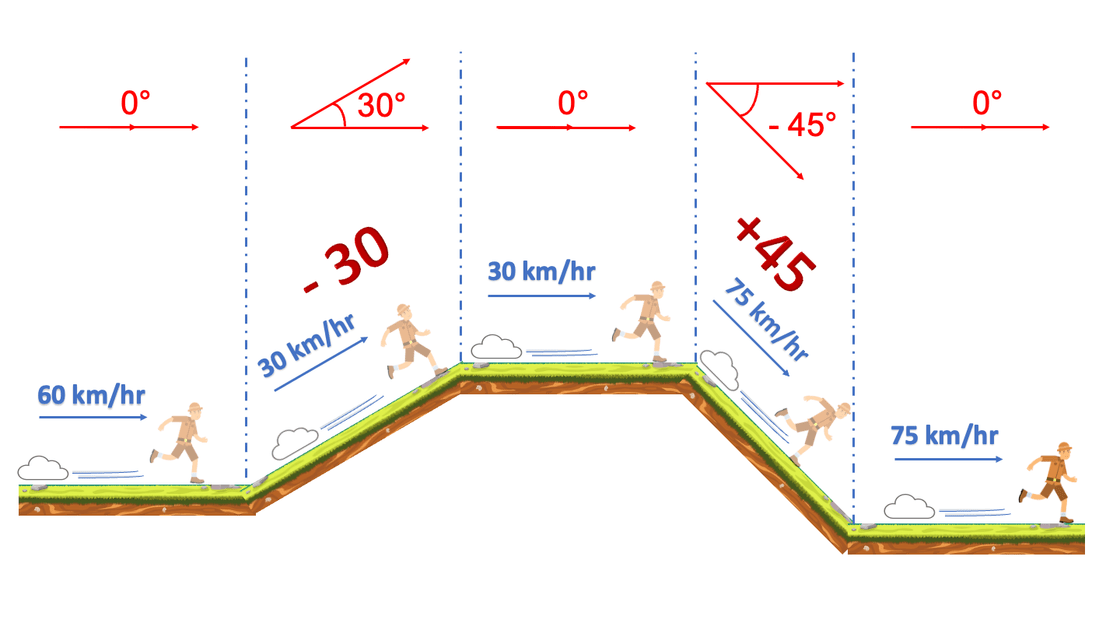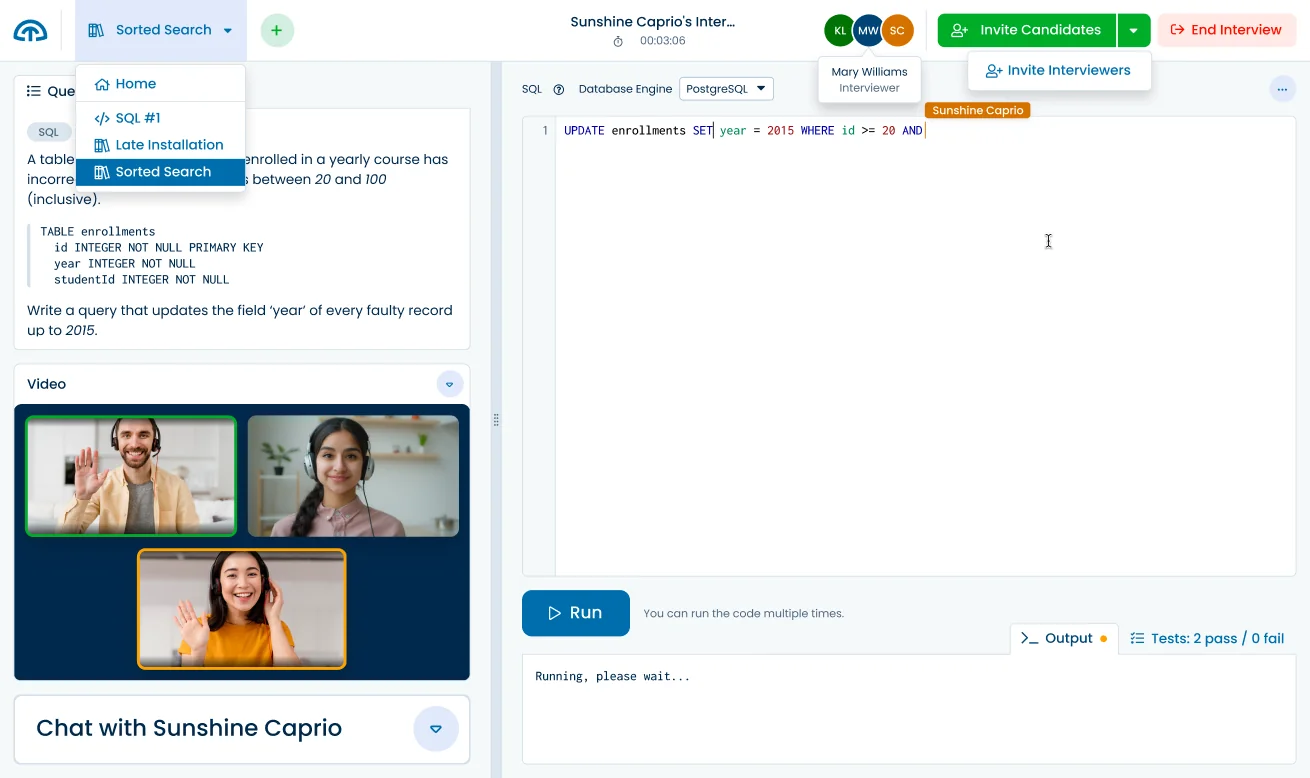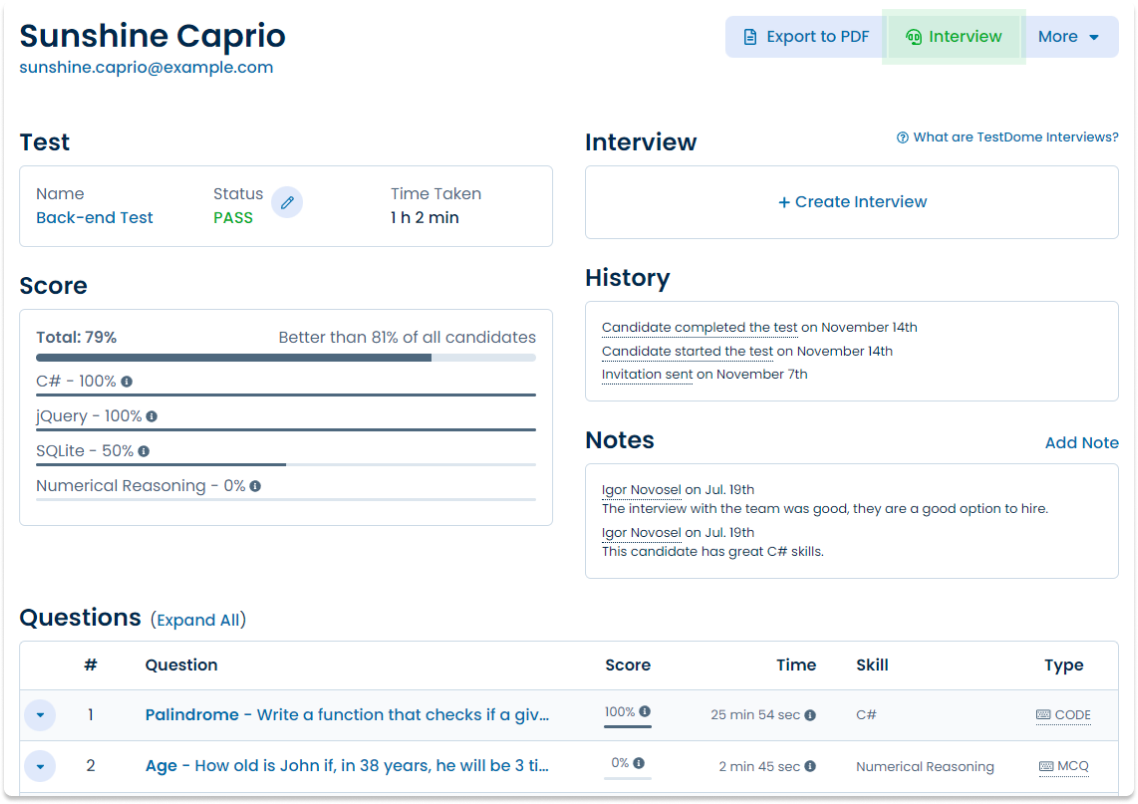C# Online Test
For jobseekers
Practice your skills and earn a certificate of achievement when you score in the top 25%.
Take a Practice TestFor companies
Screen real C# skills, flag human or AI assistance, and interview the right people.
About the test
The C# online test assesses knowledge of programming in the C# language through a series of live coding problems.
The assessment includes work-sample tasks such as:
- Working with classes, objects, and interfaces to write reusable code.
- Implementing and properly using algorithms and data structures to optimize application performance.
- Using components provided by the .NET framework class library.
A good C# developer needs a solid understanding of the C# programming language as well as the .NET framework class library and its functionality to write robust and maintainable code.
Sample public questions
A gaming company is working on a platformer game. They need a method that will compute the character's final speed, given a map and a starting speed.
The terrain on which the game character moves forward is made from various pieces of land placed together. Implement the method CalculateFinalSpeed which takes the initial speed of the character, and an array of degrees of inclination that represent the uneven terrain.
The speed of the character will increase or decrease proportionally to the incline of the land, as shown in the image below:

The magnitude of the angle of inclination will always be < 90°. The speed change occurs only once for each piece of land. The method should immediately return 0 as the final speed if an incline reduces the speed to 0 or below 0, which makes the character lose 1 life.
For example, the below code:
Console.WriteLine(CalculateFinalSpeed(60, new int[] { 0, 30, 0, -45, 0 }));should print:
75A megastore offers three types of discounts, which are represented as DiscountType enum.
Implement the GetDiscountedPrice method which should take the total weight of the shopping cart, the total price, and the discount type. It should return the final discounted price based on the discount schemes as shown in the promotional video below:
(Open full-size video in a new tab)
For example, the following code:
Console.WriteLine(GetDiscountedPrice(12, 100, DiscountType.Weight));should print:
82.0For jobseekers: get certified
Earn a free certificate by achieving top 25% on the C# test with public questions.
Take a Certification TestSample silver certificate
Sunshine Caprio
Java and SQL TestDomeCertificate
For companies: premium questions
Buy TestDome to access premium questions that can't be practiced.
Ready to interview?
Use these and other questions from our library with our
Code Interview Platform.

86 more premium C# questions
Max Sum, Product Refactoring, Prefix, Chinese Box, Car Rental, Eye of the Storm, Document Store, Snapshot, Moving Total, Driver Exam, Classroom, Username, Weighted Average, Document Counter, Disposable Wrapper, String Occurrence, Hobbies, Read Write Execute, Friend, Internal Nodes, Crop Ratio, Unique Numbers, Wheel Defects, Log Parser, Worker, Window Manager, Stories, Paper Strip, Segment, Vectors, Book Sale, Unique Product, Log Patch, Fire Dragon, Paragraph, Procedural Generator, Sort Params, Calories Burned, Date Transform, Platformer, Bicycle, Chemical Machine, Adventure Game, Seasonal Tourism, Candies, Digital Flasks, Shipping, Flimsy Bridge, Construction Game, Parking Allocation, Planet Search, Ecological Experiment, Automated Forklift, Popular Book, XML Navigation, Animal Hierarchy, Patient Class, Ingredient Tuple, Company Stock, Read First Line, Stack to List, Racer, Veterinarian, Flight Connections, Node, Ceramic Store, Chain Link, Shelf Test, Language Teacher, Shining Star, Nullable Employee, Kilometer Converter, Circuit Simulator, Airport Networks, Validate Age, Newest User, Patient Records, Jobs Time, Log Stream Writer, Fraud Detection, Pet Names, Christmas Lights, Weather Station, Automated Warehouse, Mail Room, Price Trends.
Skills and topics tested
- C#
- Algorithmic Thinking
- Accessibility Levels
- OOP
- Refactoring
- LINQ
- Data Structures
- Sorting
- Bug Fixing
- Language
- Lists
- HashSet
- Exceptions
- Properties
- Regex
- Strings
- Arithmetic
- Destructors
- Memory Management
- Stream
- Dictionary
- Iteration
- Graphs
- Arrays
- Tree
- Integer Division
- StringBuilder
- Serialization
- XML
- Linked List
- Dynamic Programming
- Extension Methods
- Higher Order Function
- Interfaces
- Random
- Pass by Reference
- Video
- Field Modifiers
- Conditions
- 2D Array
- AI Code Review
- Conditional Statements
- Abstract Class
- Tuples
- Loops
- Complexity
- Stack
- Multithreading
- Synchronization
- Queue
- Recursion
- Test Case Design
- Unit Testing
- Inheritance
- TDD
- Null Coalescing Operator
- Null Conditional Operator
- Method Overriding
- Classes
- Null Safety
For job roles
- .NET Developer
- Back-End Developer
- C# Developer
- Web Developer
Sample candidate report
Need it fast? AI-crafted tests for your job role
TestDome generates custom tests tailored to the specific skills you need for your job role.
Sign up now to try it out and see how AI can streamline your hiring process!
What others say
Simple, straight-forward technical testing
TestDome is simple, provides a reasonable (though not extensive) battery of tests to choose from, and doesn't take the candidate an inordinate amount of time. It also simulates working pressure with the time limits.
Jan Opperman, Grindrod Bank
Product reviews
Used by
Solve all your skill testing needs
150+ Pre-made tests
130+ skills
AI-ready assessments
How TestDome works
Choose a pre-made test
or create a custom test
Invite candidates via
email, URL, or your ATS
Candidates take
a test remotely
Sort candidates and
get individual reports






